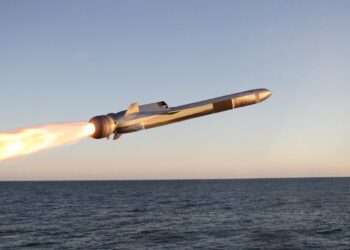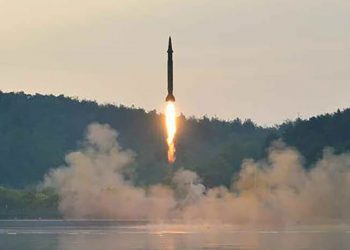WASHINGTON: Changing threats and emerging technologies drove the decision to restructure the European missile defense plan, Defense Secretary Robert M. Gates said today.
“I believe this new approach provides a better missile defense capability for our forces in Europe, for our European allies and eventually for our homeland than the program I recommended almost three years ago,” Gates said in a briefing at the Pentagon. “It is more adapted to the threat we see developing and takes advantage of new technical capabilities available to us today.”
In December 2006, Gates recommended to then-President George W. Bush that the United States should put advanced radars in the Czech Republic and 10 ground-based interceptors in Poland.
That was when intelligence officials gauged the development of Iran’s intercontinental ballistic missile as the foremost threat to the United States and its allies.
Now, intelligence reports paint a different picture – that the country is moving faster to develop its shorter-range missiles.
Gates responded by recommending to President Barack Obama that the United States now begin phasing in a missile defense system that puts radars and missiles in place sooner that are more suited to protect against the current threat. Plans are then to continue building on the system to increase its range of defense capabilities.
The president today announced his support of the plan.
“This new approach will provide capabilities sooner, build on proven systems, and offer greater defenses against the threat of missile attack than the 2007 European missile defense program,” Obama said today.
Driving the initial phase of the new plan is deploying the Navy’s Aegis weapons-system-equipped ships to the region by 2011. These are equipped with the Standard Missile 3 interceptor, which has had several successful tests in the past two years. They will be supported by some forward-position Army radar systems.
This will give the military a smaller range of detection and protection, but is enough initially to protect U.S. troops and allies against Iran’s shorter range missiles.
“We can now field initial elements of the system to protect our forces in Europe and our allies roughly six to seven years earlier than the previous plan,” Gates said.
As the SM-3 is improved, defense officials will look for positions in Europe to put them on the ground. Talks already are under way with both Poland and the Czech Republic, Gates said.
Additional sensors and more interceptors will be added and by 2020 the system will grow to cover all of Europe and have the capability to knock down multiple targets. It also will give the military the flexibility to move some of its assets to different fronts to combat new threats, Gates said.
“This gives us at least some capability early on and then an increasingly enhanced capability through this entire period,” Gates said.
Flexibility is key to the plan, officials said. Originally, the plan centered on the idea of defending against three to five missiles fired from a single rogue nation. Now they believe the United States could have to defend against several missiles simultaneously.
This makes the SM-3 ideal for the job as it is more deployable and cheaper for the military to use against such threats. One Aegis ship can carry about 100 of the interceptors. Also, SM-3s cost about $10 million each, as opposed to a ground-based interceptor — like those now on standby in Alaska and California — that top out at about $70 million.
Another feature of the new system is that other countries can combine their radars and interceptors with the United States to increase its range. Many countries already use the Aegis system, and the Japanese already have promised $1 billion toward the development of the improved SM-3, officials said.
“This is a significant opportunity to work in a global construct to both field and fund and maintain this capability in a way that we had not been able to do in the past,” said Marine Corps Gen. James E. Cartwright, the vice chairman of the Joint Chiefs of Staff, also at today’s briefing. “We are looking at other partners, both in the sensor and the weapons side, because it does not have to be just American weapons and just American sensors.”









